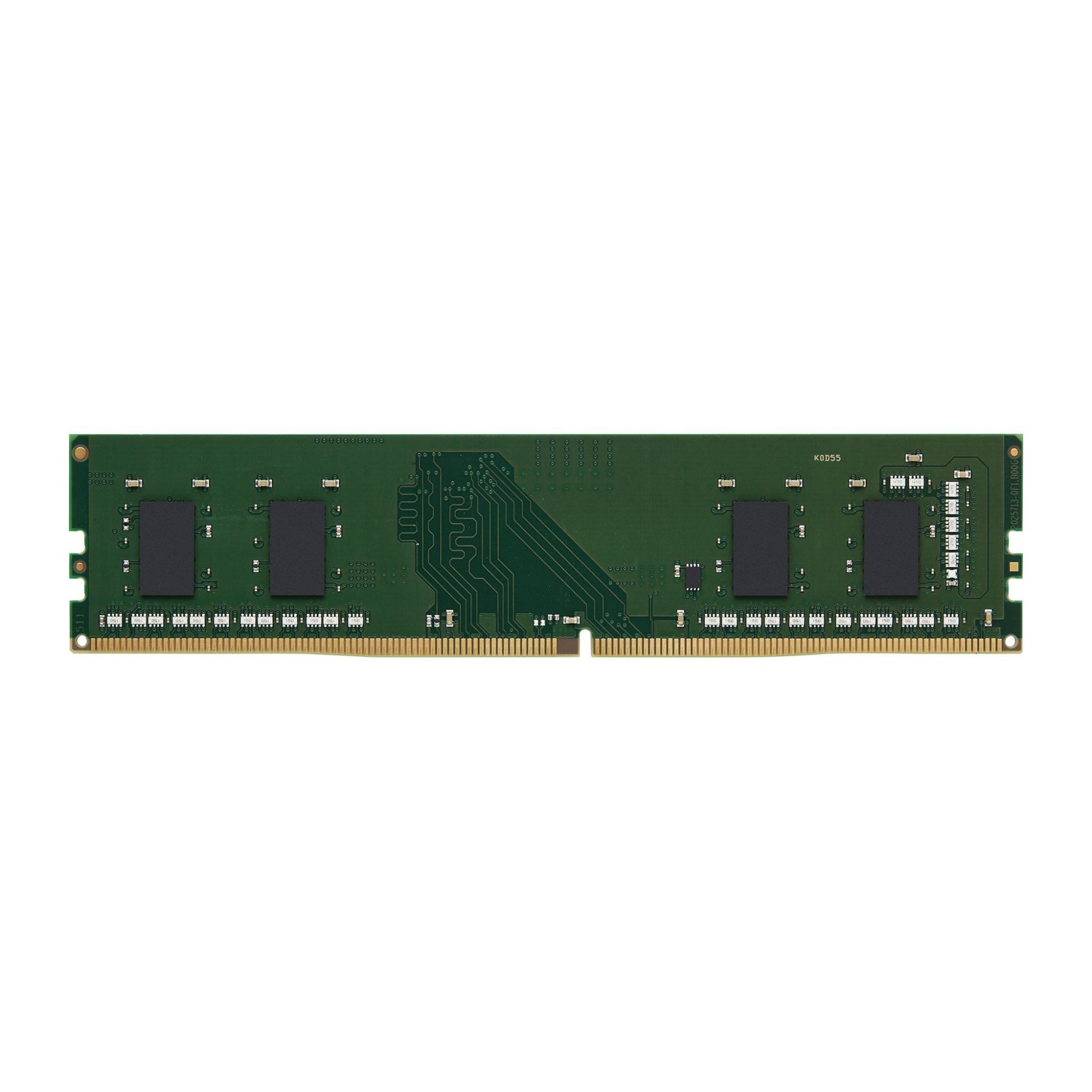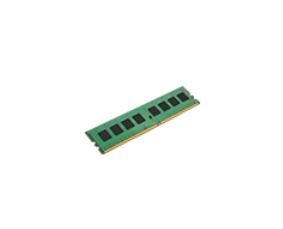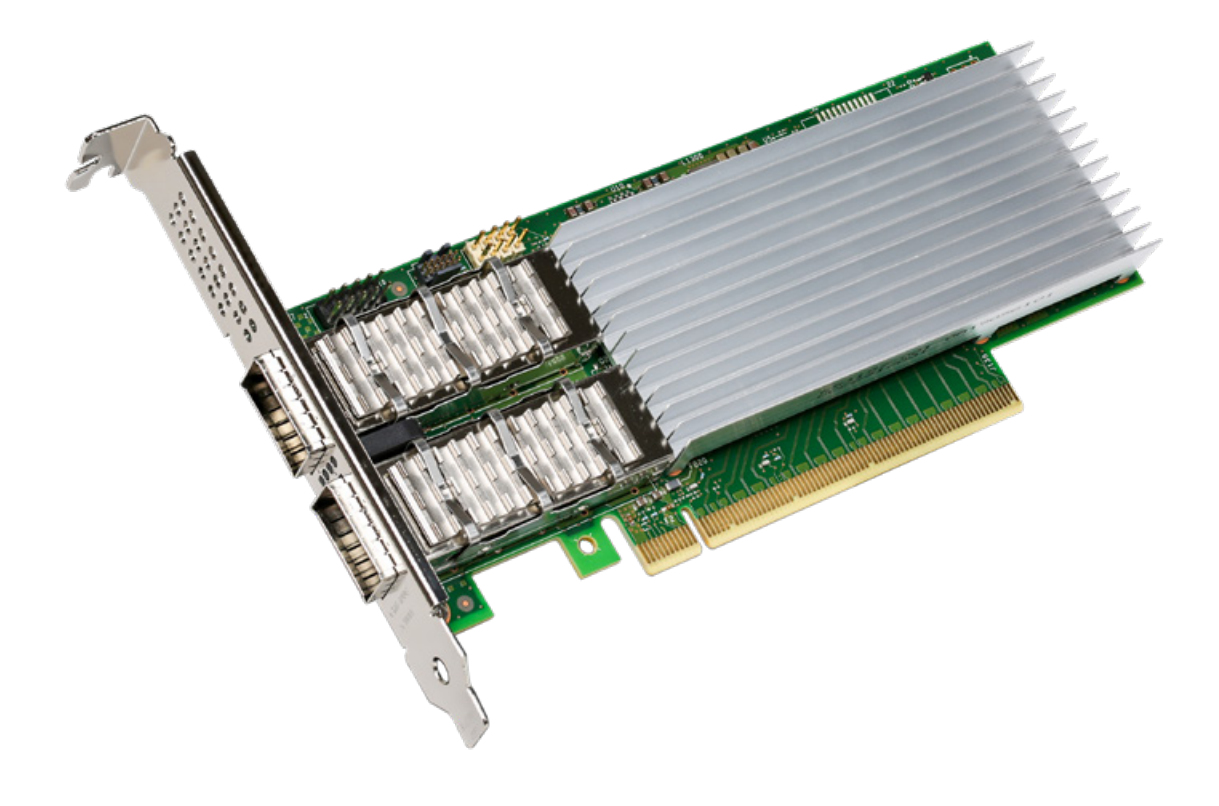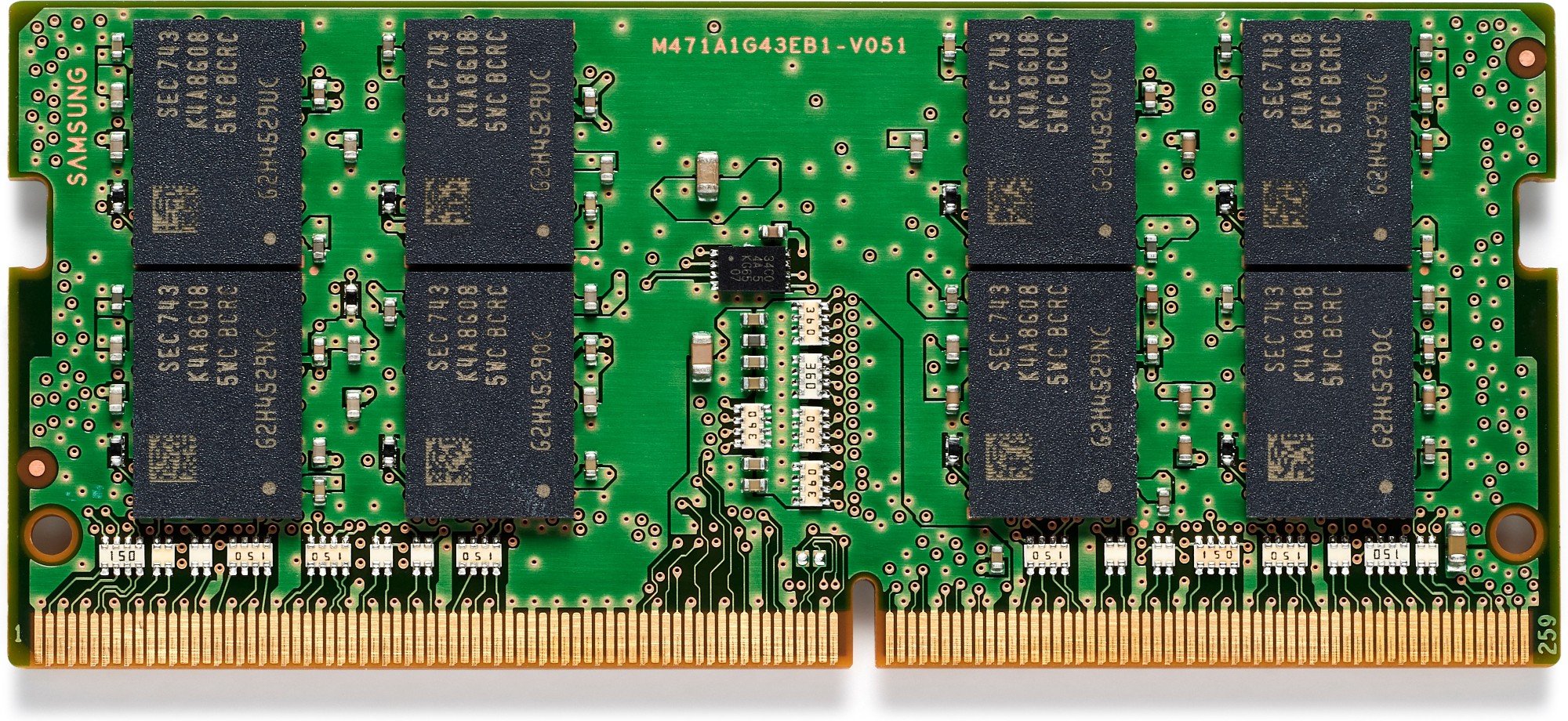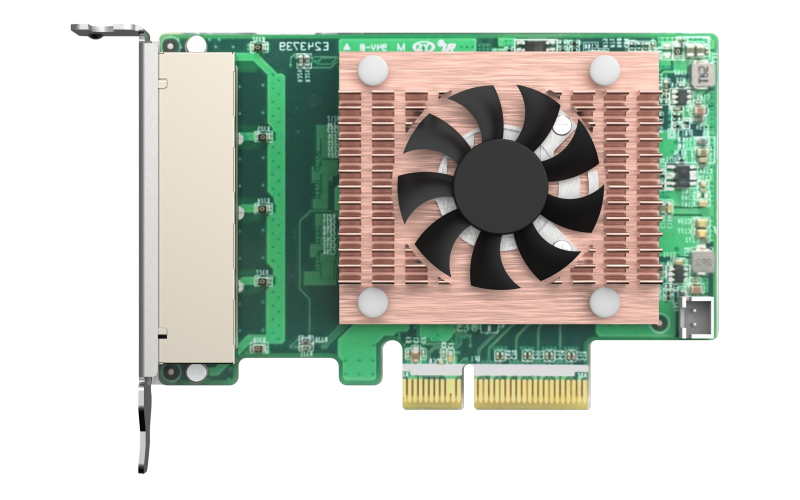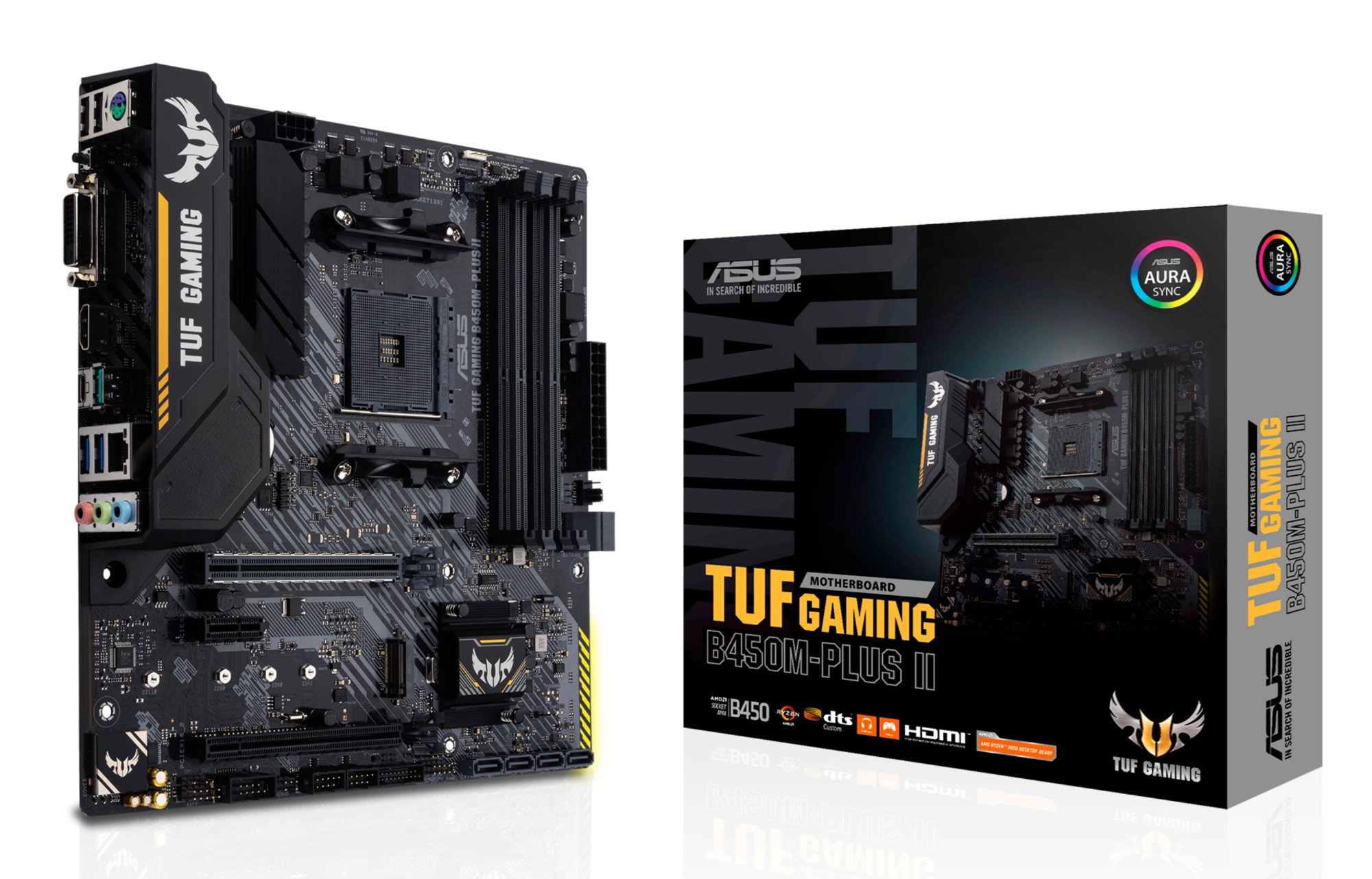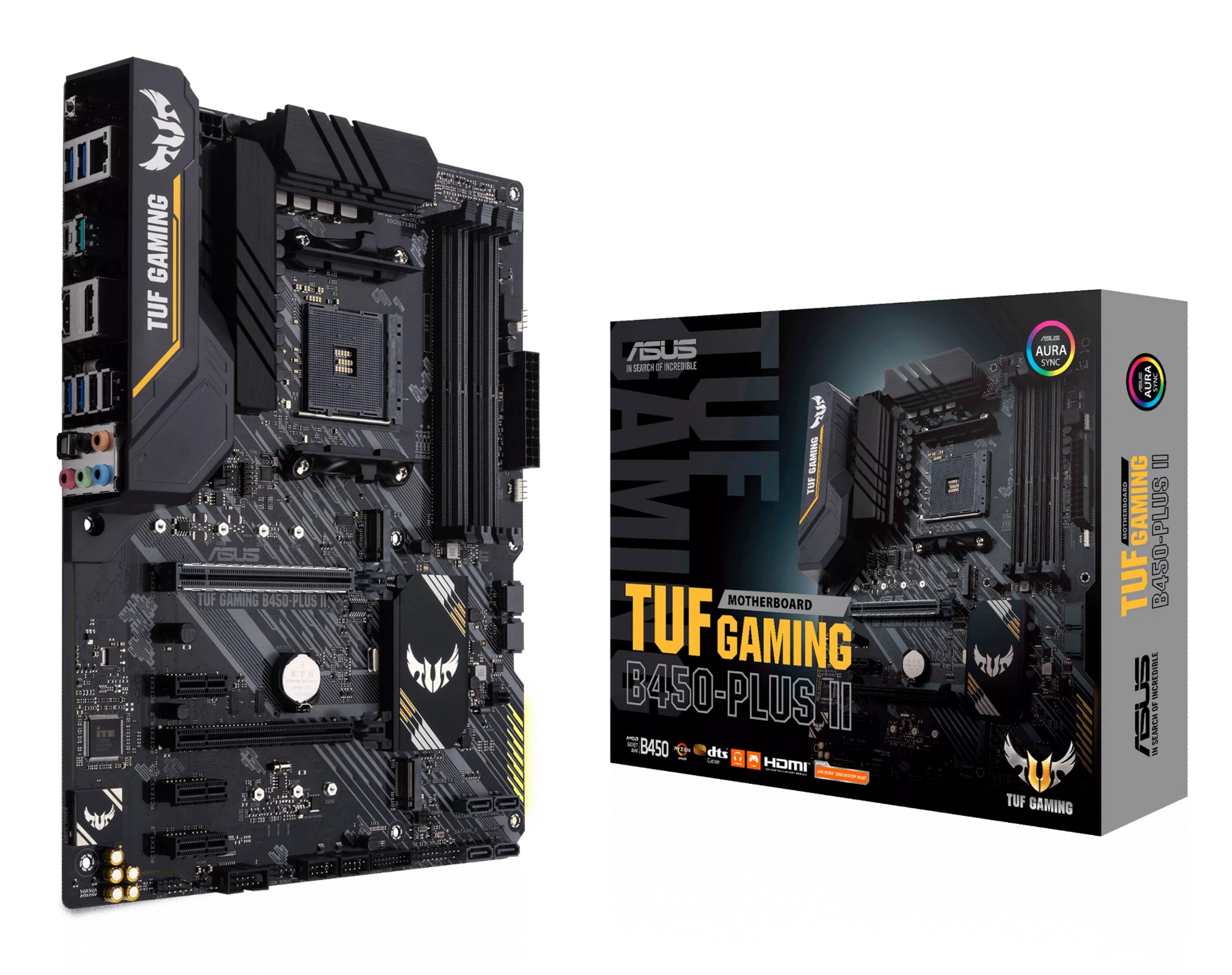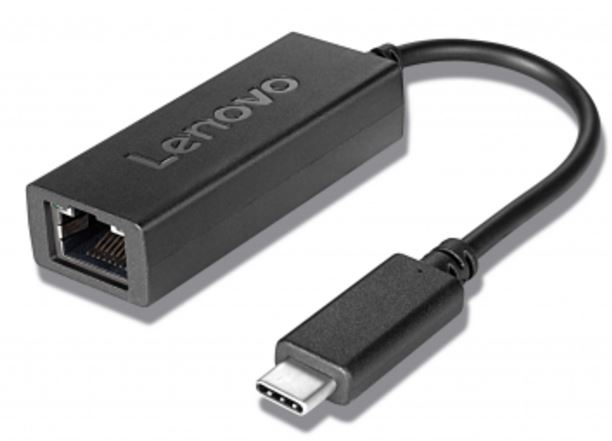Computer Components
3070 –
3080
of
4773
Availability
Sort by
Advance Filters
Kingston Technology
Kingston Technology KCP426NS6/8 Kingston Technology KCP426NS6/8 memory module 8 GB DDR4
Part# KCP426NS6/8
SKU S19454
Kingston Technology
Kingston Technology KVR32N22S6/8 Kingston Technology ValueRAM memory module 8 GB 1 x 8 GB DDR4
This document describes ValueRAM's KVR32N22S6/8 is a 1G x 64-bit (8GB) DDR4-3200 CL22 SDRAM (Synchronous DRAM), 1Rx16, memory module, based on four 1G x 16-bit FBGA components. The SPD is programmed to JEDEC standard latency DDR4-3200 timing of 22-22-22 at 1.2V. Each 288-pin DIMM uses gold contact fingers.
Part# KVR32N22S6/8
SKU S19454
Intel
Intel 82635DSD455 Intel RealSense D455 Camera Silver
Twice the range.Better performance.Introducing the latest addition to the family, the Intel® RealSense⢠Depth Camera D455. The D455 is the fourth in the D400 series, designed from feedback and knowledge gained from over 10 years of stereo camera development.See further.The D455 extends the distance between the depth sensors to 95 mm which improves the depth error to less than 2% at 4 m.A perfect pair.To improve the RGB image and the correspondence between the depth and RGB images, the RGB sensor includes a global shutter and is matched to the depth FOV with both having an 86° field of view.An IMU inside.The camera integrates an IMU to allow your application to refine its depth awareness in any situation where the camera moves. This allows improved environmental awareness for robotics and drones.Ready for your next project.The D455 provides more accuracy and flexibility, no matter what your use case.Longer range for better collision avoidance.Faster moving autonomous robots require better and more accurate collision avoidance capabilities. A wide field of view and longer range depth camera makes operation in a changing environments easier and safer.Tightly integrated RGB and depth streams for better quality scanning.Adding a global shutter to the RGB sensor and increasing the field of view to match the depth allows for improved correlation between the color and depth information.Longer range depth for touch free displays.Interactive digital displays in public spaces are increasing in popularity. The longer range D455 provides reliable touch free gesture control and interaction from a greater distance.Easy multi-camera setup for volumetric content creation.Indoors or outdoors, multiple D455 cameras can be used together. A longer range allows for realâtime scene capture at up to 90 frames per second.On-chip calibration in seconds.Intel RealSense SDK 2.0 now provides an onâchip selfâcalibration option for your D455 stereo camera. This allows camera calibration in less than 15 seconds without the need for specialized targets. Hassle free!Build once, deploy to any device.The D455 uses the same open source Intel RealSense SDK 2.0 as all other current generation Intel RealSense Depth Cameras, which is platform independent, supporting Windows, Linux, Android and macOS. This includes wrappers for many common platforms, languages and engines.
Part# 82635DSD455
SKU S19454
Intel
Intel E810CQDA2BLK Intel Ethernet Network Adapter E810-CQDA2 Internal Fiber 100000 Mbit/s
Part# E810CQDA2BLK
SKU S19454
HP
HP 13L73AT HP 13L73AT memory module 32 GB 1 x 32 GB DDR4 3200 MHz
Boost the capabilities of your HP Business Desktop PC and improve system performance and application responsiveness with low-power, high-speed DDR4 memory from HP.
Part# 13L73AT
SKU S19454
QNAP
QNAP QXG-2G4T-I225 QNAP QXG-2G4T-I225 network card Internal Ethernet 2500 Mbit/s
2.5 GbE network expansion card2.5 GbE network expansion card delivers speeds of up to 2.5 Gbps. You can easily upgrade your home and office network infrastructure with existing cables.
Part# QXG-2G4T-I225
SKU S19454
Honeywell
Honeywell CT40-EB-UVB-2 Honeywell CT40-EB-UVB-2 mobile device dock station Mobile computer Black
Part# CT40-EB-UVB-2
SKU S19454
ASUS
ASUS 90MB1620-M0EAY0 ASUS TUF Gaming B450M-Plus II AMD B450 Socket AM4 micro ATX
DURABLE. STABLE. RELIABLE.TUF Gaming motherboards are specially designed and tested to survive and thrive in conditions where other boards would struggle. Engineered with military-grade components, an upgraded power solution and a comprehensive set of cooling options, this motherboard delivers rock-solid performance with unwavering gaming stability.When you build with a TUF Gaming motherboard, you also benefit from the TUF Gaming Alliance — an ASUS collaboration with trusted industry partners that ensures easier building, best compatibility, and complementary aesthetics from components to case.ROCK-SOLID PERFORMANCEWith upgraded power delivery and comprehensive cooling options to fuel the latest AMD Ryzen CPUs, plus support for faster storage and connectivity, TUF GAMING B450M-PLUS II is the perfect foundation for your next high-core-count battle rig.EASY PC DIYTUF Gaming motherboards are designed to be easy to set up and configure just the way you want — even for first-time builders. The TUF Gaming Alliance ecosystem makes selecting compatible parts easy, while Armoury Crate software offers full control of system settings via a single dashboard. TUF Gaming motherboards give you everything you need to build your dream gaming rig without adding complexity.Build with confidenceTUF Gaming Alliance is a collaboration between ASUS and trusted PC-component brands to ensure compatibility with a wide range of parts, such as PC cases, power supplies, CPU coolers, memory kits and more. With more partnerships and components being added regularly, the TUF Gaming Alliance will continue to grow even stronger.IMMERSIVE GAMINGTUF GAMING B450M-PLUS II provides a complete, high-performance gaming package with a long list of features to improve your experience, including ultrafast networking for smoother online gameplay, pristine audio with positional cues for FPS gaming, and onboard RGB lighting that syncs with attached accessories to help you create a personalized gaming atmosphere.Turbo LANNETWORK-OPTIMIZATION SOFTWARE FOR CUSTOMIZABLE PACKET PRIORITIZATIONTurbo LAN is a network-optimization software for customizable packet prioritization. With cFosSpeed traffic-shaping technology, it allows you to configure application priority via an intuitive interface, and reduces network lag.
Part# 90MB1620-M0EAY0
SKU S19454
ASUS
ASUS 90MB1650-M0EAY0 ASUS TUF GAMING B450-PLUS II AMD B450 Socket AM4 ATX
DURABLE. STABLE. RELIABLE.TUF Gaming B450-PLUS II distills essential elements of the latest AMD platform and combines them with game-ready features and proven durability. Engineered with military-grade components, an upgraded power solution and a comprehensive set of cooling options, this motherboard delivers rock-solid performance with unwavering gaming stability.When you build with a TUF Gaming motherboard, you also benefit from the TUF Gaming Alliance — an ASUS collaboration with trusted industry partners that ensures easier building, best compatibility, and complementary aesthetics from components to case.ROCK-SOLID PERFORMANCEWith upgraded power delivery and comprehensive cooling options to fuel the latest AMD Ryzen CPUs, plus support for faster memory and storage, TUF Gaming B450-PLUS II is the perfect foundation for your next high-core-count battle rig.DrMOSThe onboard VRM of TUF Gaming B450-PLUS II utilizes 8+2 DrMOS power stages that combine high-side and low-side MOSFETs and drivers into a single package, delivering the power and efficiency that 3rd Gen AMD Ryzen™ Processors demand.Stack Cool 3+2-ounce copper layers draw heat away from critical components to keep them at their optimal operating temperatures and provide more headroom to push CPUs beyond stock speeds.TUF CHOKESCertified military-grade TUF chokes deliver rock-steady power to the CPU, improving system stability.TUF CAPACITORSProprietary capacitors provide up to 20% greater temperature tolerance and 5X-longer lifespan.Digi+ VRMThe integrated Digi+ VRM voltage-regulator module (VRM) is one of the finest in the industry, ensuring ultra-smooth and ultra-clean power delivery to the CPU at all times.Cooler by designVRM HEATSINKA large, high-mass heatsink with extensive surface that covers the VRM and choke areas improves heat dissipation.THERMAL PADHigh-quality thermal pads help transfer heat from the inductor and phase array to the heatsink.COMPREHENSIVE FAN CONTROLSTUF Gaming B450-PLUS II features comprehensive fan controls that can be configured via Fan Xpert 4 utility or via the award-winning ASUS UEFI BIOS.USB 3.2 Gen 2 Type-A & Type-CNumerous USB ports support gaming rigs loaded with peripherals, including a USB Type-A and a Type-C connectors with fast USB 3.2 Gen 2 connectivity for compatible cases.Thunderbolt™ 3 supportAn integrated Thunderbolt™ 3 header supports up to 40 Gbps of aggregate interface bandwidth. One Thunderbolt 3 port can support up to six devices in a daisy-chain, and provide up to 100 watts of power to fast-charge devices.EASY PC DIYTUF Gaming motherboards are designed to be easy to set up and configure just the way you want — even for first-time builders. The TUF Gaming Alliance ecosystem makes selecting compatible parts easy, while Armoury Crate software offers full control of system settings via a single dashboard. TUF Gaming motherboards give you everything you need to build your dream gaming rig without adding complexity.Build with confidenceTUF Gaming Alliance is a collaboration between ASUS and trusted PC-component brands to ensure compatibility with a wide range of parts, such as PC cases, power supplies, CPU coolers, memory kits and more. With more partnerships and components being added regularly, the TUF Gaming Alliance will continue to grow even stronger.TUF PROTECTIONSafeSlotSafeSlot is the PCIe slot reinvented by ASUS and engineered to provide superior retention and shearing resistance. Manufactured via a new insert-molding process, SafeSlot integrates fortifying metal for an inherently stronger slot, which is then firmly anchored to the PCB through additional solder points.ESD guardsESD Guards prolong the life of components while preventing damage from electrostatic discharge, providing protection for up to +/- 10 kV of air discharge and +/- 6 kV of contact discharge — greatly surpassing the respective industry standards of +/- 6 kV and +/- 4 kV.TUF LANGuardTUF LANGuard is a military-grade innovation that integrates advanced signal-coupling technology and premium surface-mounted capacitors to improve throughput, protecting the motherboard from lightning strikes and static electricity.DRAM overvoltage protectionOnboard resettable fuses prevent overcurrent and short-circuit damage. This extends beyond I/O ports to DRAM to safeguard the lifespan of your system and connected devices.Stainless-steel back I/O panelTUF Gaming motherboards have a corrosion-resistant stainless-steel back I/O panel bonded with chromium oxide to provide a 3X-longer lifespan versus traditional panels. With this protective feature, TUF Gaming motherboards passed 72-hour salt fog testing, while other brands only passed 24-hour testing.EASY CONFIGURATIONBIOS FlashBack™BIOS FlashBack™ is the simplest and safest (UEFI) BIOS update method. Simply drop the (UEFI) BIOS file onto a FAT32 formatted USB stick, plug it into the USB BIOS FlashBack™ port and press the button. Updates can even be performed without having memory or a CPU installed.Armoury CrateArmoury Crate is a new software utility designed to give you centralized control of supported gaming products. From a single intuitive interface, Armoury Crate lets you easily customize RGB lighting and effects for every compatible device in your arsenal and synchronize them with Aura Sync for unified system lighting effects. You can also turn on the AI Noise-Canceling Microphone function for crystal-clear in-game voice communication. The software also provides control of settings for a select and growing number of products, including keyboard and mouse preferences as well as laptop overclocking and fan speeds, making it easier to tune the look and feel of your system. Armoury Crate even features dedicated product registration and news areas to help you stay in touch with the gaming community.IMMERSIVE GAMINGTUF Gaming B450-PLUS II provides a complete, high-performance gaming package with a long list of features to improve your experience, including ultrafast networking for smoother online gameplay, pristine audio with positional cues for FPS gaming, and onboard RGB lighting that syncs with attached accessories to help you create a personalized gaming atmosphere.EXCLUSIVE GIGABIT ETHERNETExperience ultra-fast gaming with the ASUS-exclusive Realtek® L8200A Gigabit Ethernet. With performance and stability enhancements, the LAN is optimized for CPU-efficient, low-latency data transfers.AI NOISE-CANCELING MICROPHONEAI Noise-Canceling Microphone software is exclusively featured on ASUS motherboards and supports 3.5 mm, USB, or Bluetooth headsets. The utility leverages a massive deep-learning database to preserve the sound of your voice while eliminating distracting keyboard clatter, mouse clicks, and other forms of environmental noise. And it only places a slight load on the CPU, ensuring minimal impact on gaming performance.signal-to-noise ratioPRISTINE AUDIOThe unique audio codec designed in close collaboration with Realtek for TUF Gaming B550M series motherboards features an unprecedented 108 dB signal-to-noise ratio for the stereo line out and a 103dB SNR for the line in, providing pristine audio quality.DTS® Custom for gaming headsetsHone your battle skills with exclusive DTS® Custom onboard audio. Utilizing advanced emulation techniques to create positional cues via stereo headphones, DTS Custom takes onboard audio to a new frontier. With three presets ― Aerial, Soundscape, and Tactical ― for different genres, you'll have a distinct advantage in every game.AERIAL MODEExperience audio as though hovering above the game world, with sound coming from ahead — perfect for MOBA, RTA, strategy and sports titles!SOUNDSCAPE MODEThe ideal audio envelope for MMO, RPG, action and horror games — your ears will put you in the center of the action!TACTICAL MODEShhh — is that an enemy just around the corner? DTS Custom emphasises detail for stealthy play, so you'll detect and locate every footstep!
Part# 90MB1650-M0EAY0
SKU S19454
Lenovo
Lenovo GX90S91832 Lenovo GX90S91832 network card Ethernet 1000 Mbit/s
The Lenovo USB-C to Ethernet Adapter is quick and easy way to connect your USB-C enabled notebook to Ethernet connections. It’s ideal for imaging of systems or transferring large files quickly.
Part# GX90S91832
SKU S19454
Get a Quote

Item(s) added to cart

©2025 IT VISION NETWORKS CANADA INC – All Rights Reserved. BN: 717291223 OCN: 1001150813

 0
0
